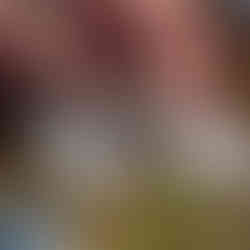An Old Friend Returns to Mąą Wákąčąk
- Sauk Prairie Conservation Alliance

- Sep 10
- 3 min read
Article by M. Mossman

The prairie vole. (Microtus ochrogaster). I love that little mouthful of a name. It means “small ear, yellow belly”, which is true enough. But to me it means “rare grassland vole that was once abundant, and has a fascinating lifestyle, lovely grizzled fur and 5 plantar tubercles!” This Wisconsin Species of Greatest Conservation Need is hard to find, being restricted to open barrens, sandy fields and a few other grasslands in southern Wisconsin. I get excited whenever I peek inside one of my small mammal live-traps and see its characteristic pelage. I hadn’t found one at Badger since 2008 and had almost given up on them, but this year they were back! I found them in two prairie restoration sites on Mąą Wákąčąk, managed by the Ho-Chunk Nation—one site in its first growing season, and the other in its 6'th.
A vole is measured by M. Mossman. Photos by Ron Lutz II
Prairie voles look like meadow voles (Microtus pennsylvanicus), which are abundant and widespread in old fields, hay fields, meadows, marshes and prairies throughout southern Wisconsin. Both species have a short tail, short ears, small eyes, and live on the ground, beneath the litter and among shallow tunnels. They feed on seeds, plant stems, leaves, inner bark and occasionally invertebrates. They build small nests of grass in the litter or underground, are active throughout the day and night, year-round, and most die by age one. Their abandoned nests are often used by nesting bumblebees. Voles are eaten by raptors, snakes, and mammalian carnivores like weasels, badgers, foxes and coyotes. They play a crucial role in grassland ecosystems.

The meadow vole is uniformly gray-brown with a lighter gray underside, while the prairie vole has a pelt peppered with mixed shades of brown, gray and black, and a yellowish cast below. And on the hind foot, “Meadows” usually have 6 pads, while “Prairies” have 5. Like many plants and animals that may look similar to us, these two have way different natural histories. Meadow vole adult males and females maintain independent territories and generally do not associate other than to mate. Prairie voles are somewhat colonial and form long-term, monogamous pair bonds with shared responsibilities for nests and young—quite rare for any sort of rodent (and even for humans, you might say).
M. Mossman & Dan Shawley collecting data. Photos by Ron Lutz II
Also odd how the status of these two species has changed. Back in the 1940s Aldo Leopold, his grad students and local naturalist Albert Gastrow studied farmland wildlife just across the river from Prairie du Sac. Mammologist Harold Hanson ran trap-lines there and on the former Sauk Prairie in fall 1941 just before the Powder Plant began. He found prairie voles the most widespread small mammal in ag fields and grasslands, while the meadow vole was nearly limited to sedgy wetlands. He worried that with ongoing ditching, it would disappear.

Things change. Why and how? Like meadowlarks, the prairie vole seemed to adapt well to the low-intensity agriculture that replaced native prairies and savannas, then suffered with “clean” farming, the loss of grassy habitat, urbanization, woody succession and fragmentation. Was the meadow vole, like the generalist Red-winged Blackbird, luckily predisposed to adapt well to these same changes? I hope our monitoring of different management regimes at the Badger Lands can help us answer that. We do not want to lose another strand in this ecological web, another way of living, another friend.

Acknowledgments: Thanks to Lisa Hartman, Dan Shawley, Ron Lutz II, Kristine Fisher and Angus Mossman for help in the field in 2024, and to the Ho-Chunk Nation and Randy Poelma for permission and encouragement to monitor the effects of their management on Mąą Wákąčąk.
















Comments